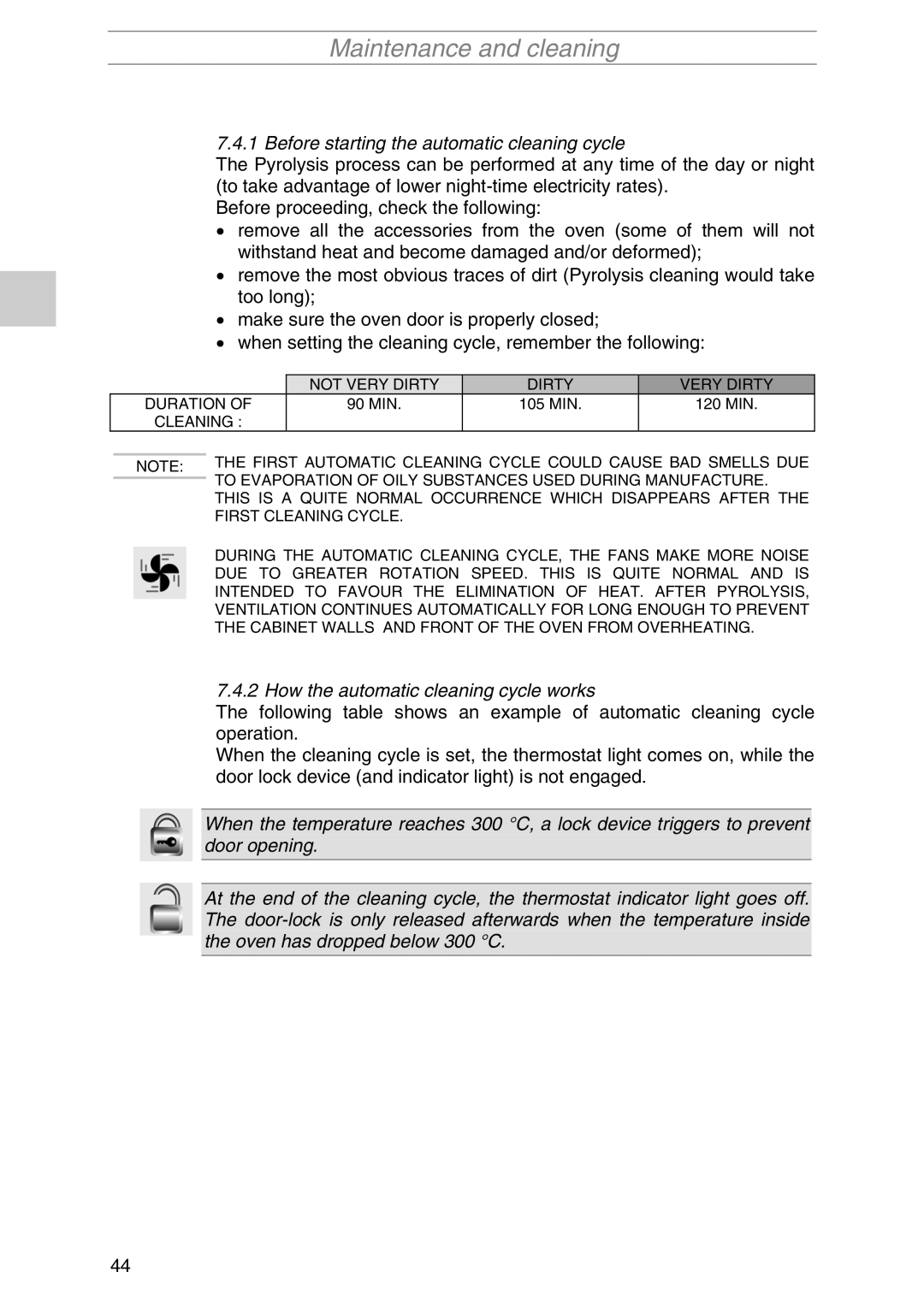
Maintenance and cleaning
7.4.1 Before starting the automatic cleaning cycle
The Pyrolysis process can be performed at any time of the day or night (to take advantage of lower
Before proceeding, check the following:
•remove all the accessories from the oven (some of them will not withstand heat and become damaged and/or deformed);
•remove the most obvious traces of dirt (Pyrolysis cleaning would take too long);
•make sure the oven door is properly closed;
•when setting the cleaning cycle, remember the following:
| NOT VERY DIRTY |
| DIRTY |
| VERY DIRTY |
|
|
| |||
DURATION OF | 90 MIN. | 105 MIN. | 120 MIN. | ||
CLEANING : |
|
|
|
|
|
NOTE: THE FIRST AUTOMATIC CLEANING CYCLE COULD CAUSE BAD SMELLS DUE TO EVAPORATION OF OILY SUBSTANCES USED DURING MANUFACTURE. THIS IS A QUITE NORMAL OCCURRENCE WHICH DISAPPEARS AFTER THE FIRST CLEANING CYCLE.
DURING THE AUTOMATIC CLEANING CYCLE, THE FANS MAKE MORE NOISE DUE TO GREATER ROTATION SPEED. THIS IS QUITE NORMAL AND IS INTENDED TO FAVOUR THE ELIMINATION OF HEAT. AFTER PYROLYSIS, VENTILATION CONTINUES AUTOMATICALLY FOR LONG ENOUGH TO PREVENT THE CABINET WALLS AND FRONT OF THE OVEN FROM OVERHEATING.
7.4.2 How the automatic cleaning cycle works
The following table shows an example of automatic cleaning cycle operation.
When the cleaning cycle is set, the thermostat light comes on, while the door lock device (and indicator light) is not engaged.
When the temperature reaches 300 °C, a lock device triggers to prevent door opening.
At the end of the cleaning cycle, the thermostat indicator light goes off. The
44
